With the fingers on my two hands, I can count the number of pull-ups I’ve ever done in my whole life. The most I’ve ever done was 1 consecutive pull-up. I remember being in Boy Scouts and doing a fitness test. I was probably in middle school at the time, and I couldn’t do a single pull-up. After a few weeks, we had to record our progress; I did not complete a single pull-up again.
As I got older, I worked on push-ups and started running and biking a bit. I never got the chance to work on my pull-ups, but I managed to do a single pull-up a few times over the last few years. I magically got stronger, going from 0 to 1 pull-up. Now in 2019, at 23 years old, I’ve decided to increase my pull-ups from 1 to 30. Along with that, I’ve set another goal of a 3 minute dead hang from a rotating bar.
In this post, I will just go through my process of making a pull-up bar in my apartment.
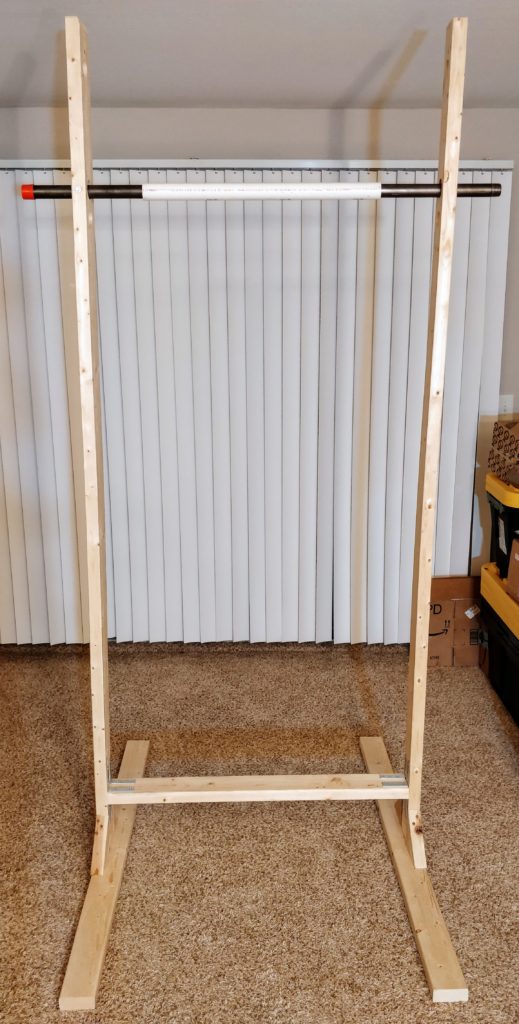
First, I bought some 2×4 lumber. I tried to make the surface a bit smoother by planing and sanding it. Probably was just a waste of time, but I wanted to try using a cheap plane I bought on Amazon.
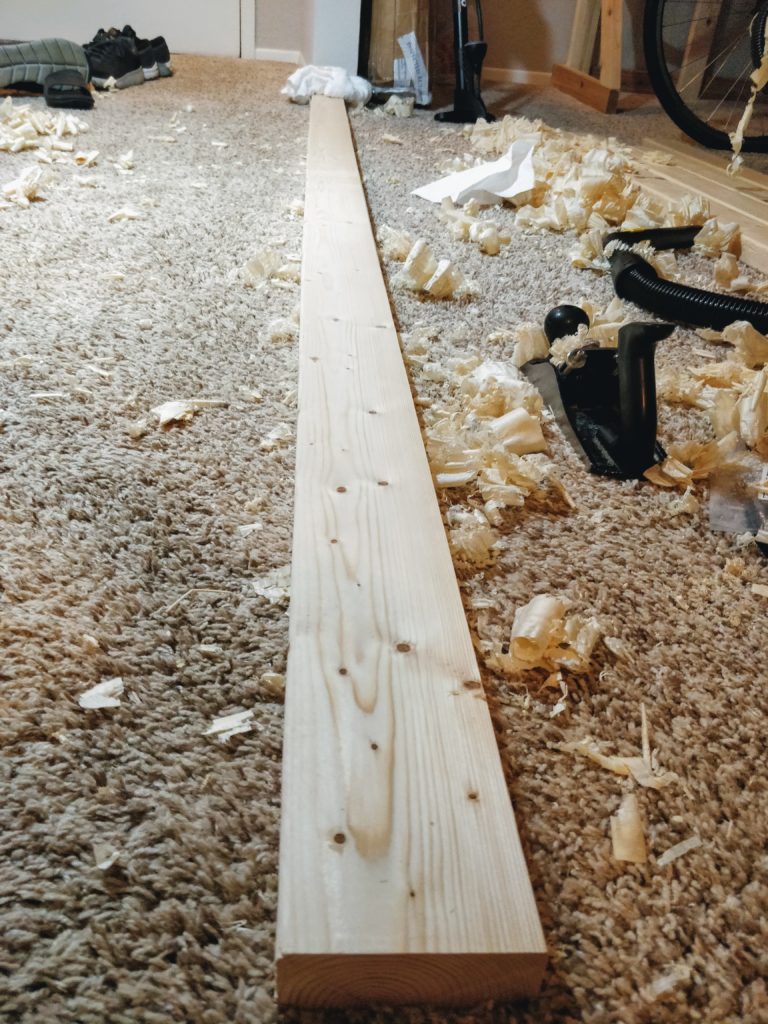
I cut some angle pieces with a wood saw
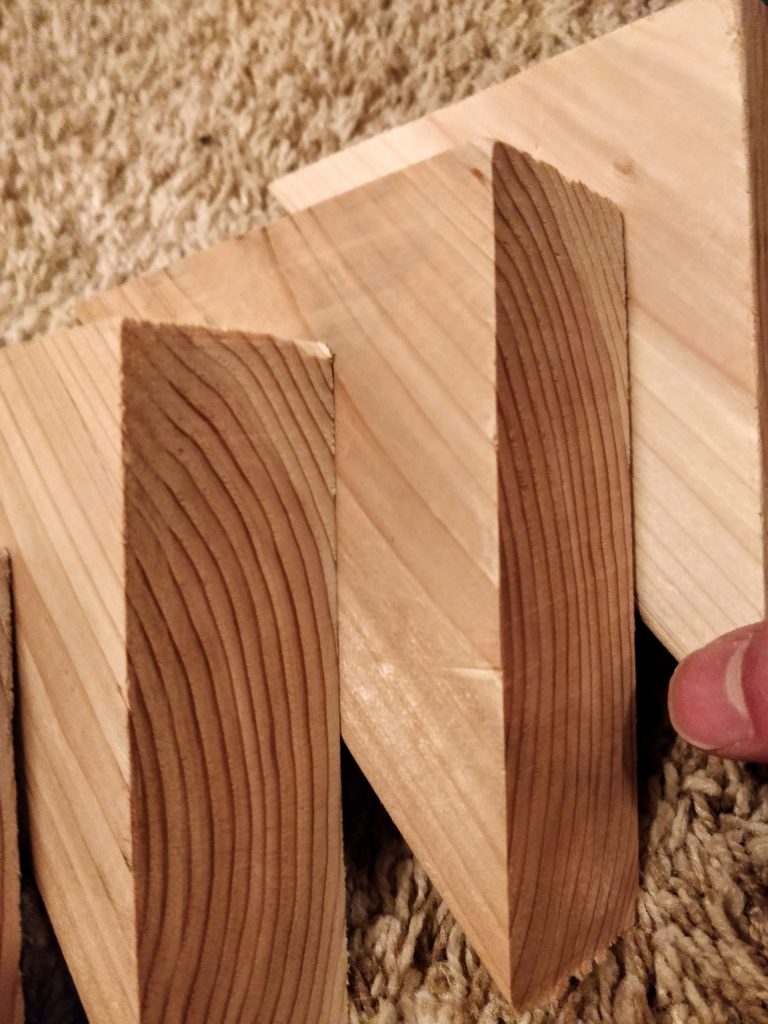
I bought some angle brackets as well since I knew it would be time consuming making wooden angles.

I ran into a bit of a problem trying to lift the pull-up bar up since I made it only a few inches shorter than my ceiling height.

I managed to figure it out though. I was able to rotate it on the blue axis instead of the red axis.
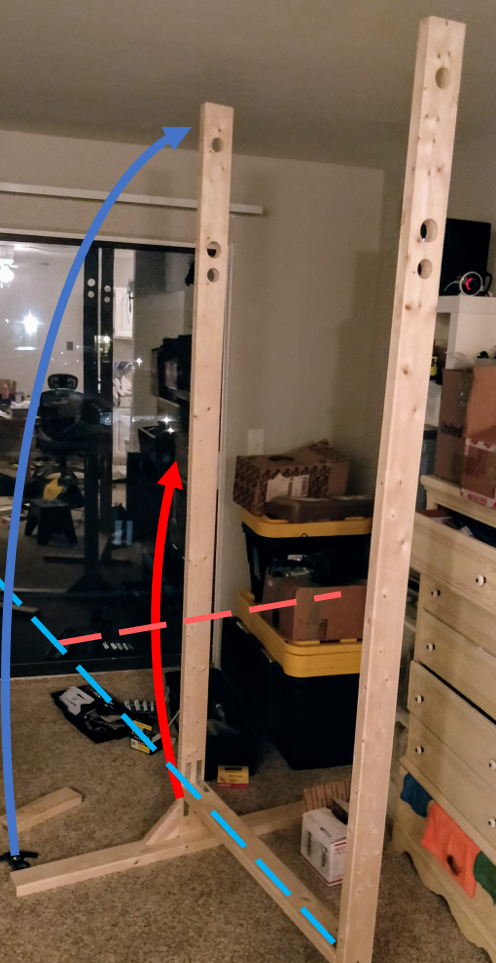
I bought steel pipes for the main bar. I initially tried using pvc but it was too weak.
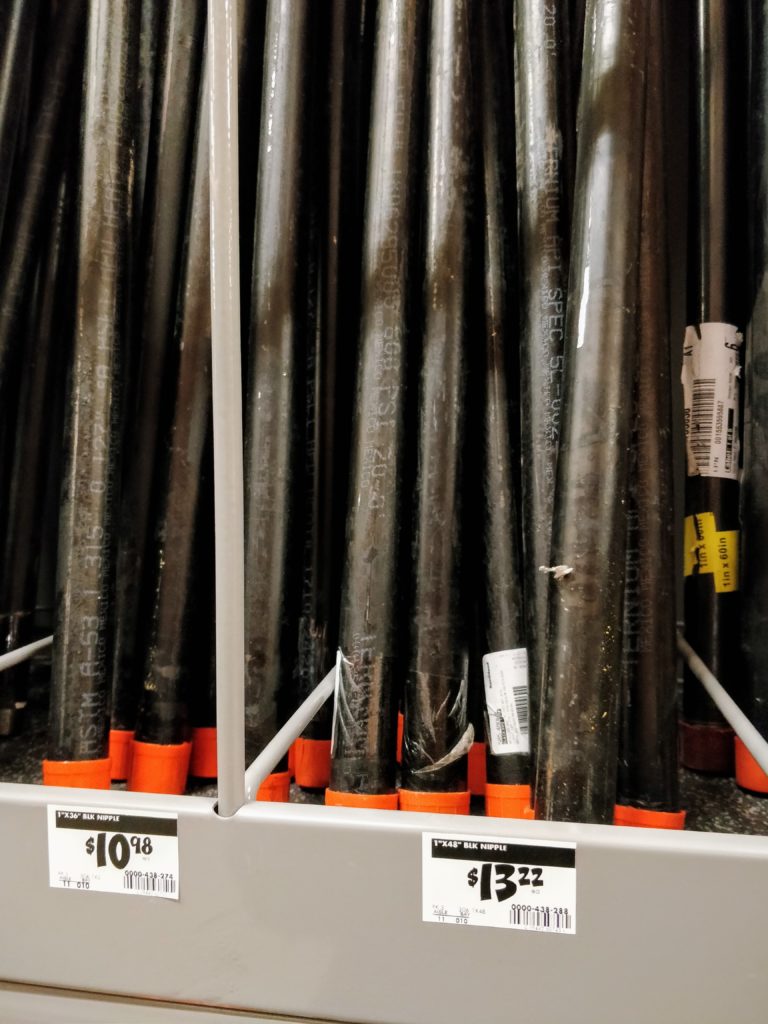
The pipe I bought had a sticky black coating on it. I used a razor blade to scrape off as much as possible. Then I used acetone to wipe off any remaining bit.

I drilled a hole for a bolt to go through the pipe and the wood. This prevents the bar from rotating.

Around the steel pipe, I can slide a PVC pipe over for a rotating bar. This is necessary for some of my goals, and is also why I didn’t just buy a pull-up bar that hang on a doorway.
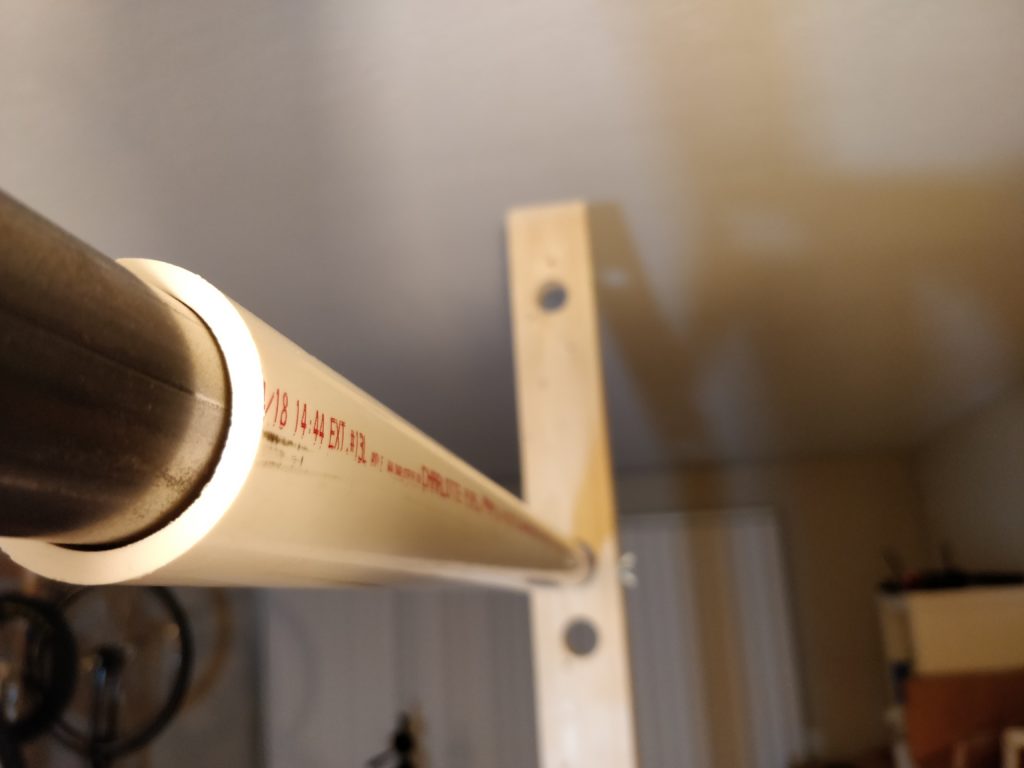
And that’s it!

The bottom horizontal beam can be used for elevated push-ups or various other exercises as well.
I would recommend using larger steel L-brackets instead of the smaller ones shown and the wooden angles.
Leave a comment showing your pull-up setup or your thoughts on pull-ups in general!

Heya, thanks for sharing your project, I wanted to ask how stable the bar feels. Does it sway much when you’re working out? Also, how is the durability, has it held up well? Thanks
It’s stable in the fore-aft direction. Side to side, it is quite wobbly since there are only the metal brackets to support it, but that hasn’t a problem for doing normal pullups for me. I don’t see it breaking anytime in the near future unless someone really tries to on purpose!